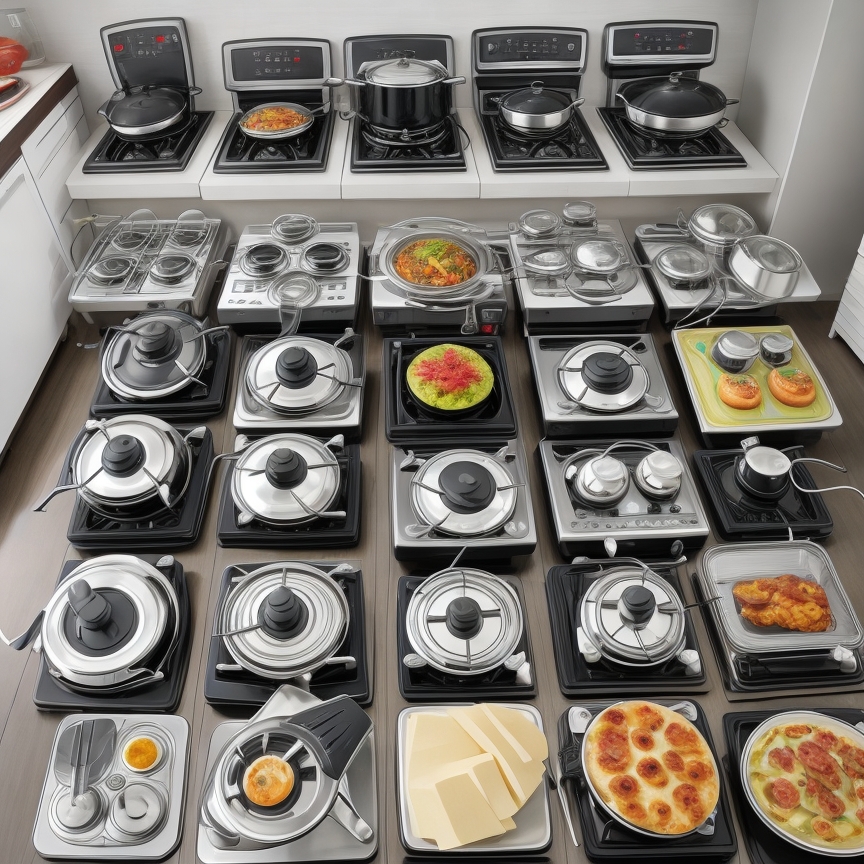Understanding the Diversity of Electric Cookers
In today’s modern kitchens, electric cookers play a pivotal role in simplifying cooking tasks and enhancing culinary experiences. These appliances come in various types, each offering unique features and functionalities to cater to different cooking needs. From traditional coil stoves to advanced induction cooktops, the market is abundant with options. In this comprehensive guide, we delve into the intricacies of different types of electric cookers, their operational mechanisms, heating capabilities, and safety features.
Types of Electric Cookers Available
Electric cookers come in several varieties, each offering distinct advantages and functionalities:
- Traditional Electric Coil Stove:
- This type of cooker features coiled metal heating elements placed beneath a flat cooking surface.
- When electricity flows through these coils, they generate heat, which is then transferred to pots and pans placed on the stove.
- Traditional coil stoves are known for their durability and affordability, making them a popular choice for many households.
- Smooth-Top Electric Stove:
- Unlike coil stoves, smooth-top electric stoves boast a flat ceramic or glass surface.
- Radiant heating elements beneath the surface generate heat, which is then transferred to the cookware above.
- These stoves offer even heat distribution and a sleek, modern aesthetic to the kitchen.
- Induction Cooktops:
- Induction cooktops represent the pinnacle of electric cooking technology.
- They generate electromagnetic fields that induce eddy currents in ferrous materials like iron or steel.
- These currents generate heat within the cookware itself, leading to precise and rapid cooking.
- Induction cooktops offer unparalleled control over temperature and are highly energy-efficient.
- Electric Hot Plates:
- Ideal for compact spaces or outdoor cooking, electric hot plates are portable and versatile.
- They consist of a flat heating surface powered by electricity, accommodating a variety of cookware.
- Hot plates are simple to use and provide a convenient alternative when traditional stoves are unavailable.
Operational Mechanisms of Electric Cookers
Understanding how each type of electric cooker operates is essential for efficient and safe cooking:
- Traditional Electric Coil Stove: Electricity flowing through the coils generates heat, transferred to the cookware placed on top.
- Smooth-Top Electric Stove: Radiant heating elements beneath the surface generate heat, evenly distributed to the cookware above.
- Induction Cooktops: Electromagnetic fields induce currents in ferrous materials, heating the cookware directly and ensuring precise cooking.
- Electric Hot Plates: Electricity flows through a resistive element within the hot plate, generating heat for the cookware placed on top.
Heating Capacities and Material Compatibility
One notable distinction among electric cookers is their heating capacities and compatibility with different cookware materials:
- Induction Cooktops: Require ferrous materials for effective heating, such as cast iron or magnetic stainless steel. Non-ferrous materials like aluminum or copper are not suitable.
- Traditional Electric Coil Stove and Smooth-Top Electric Stove: Can accommodate a wide range of cookware materials, including stainless steel, aluminum, copper, and glass.
Surface Cooling Technology
Certain electric cookers incorporate advanced safety features to ensure the cooking surface remains cool to the touch:
- Induction Cooktops and Smooth-Top Electric Stoves: Employ cooling mechanisms that efficiently transfer heat to the cookware while insulating the cooking surface. This feature minimizes the risk of burns and enhances energy efficiency.
Conclusion
Electric cookers offer a diverse range of options to suit various cooking preferences and requirements. Whether it’s the simplicity of a traditional coil stove or the precision of an induction cooktop, each type of electric cooker presents unique features and operational mechanisms. By understanding the functionalities and capabilities of different electric cookers, consumers can make informed decisions to enhance their culinary experiences while ensuring safety and efficiency in the kitchen.
